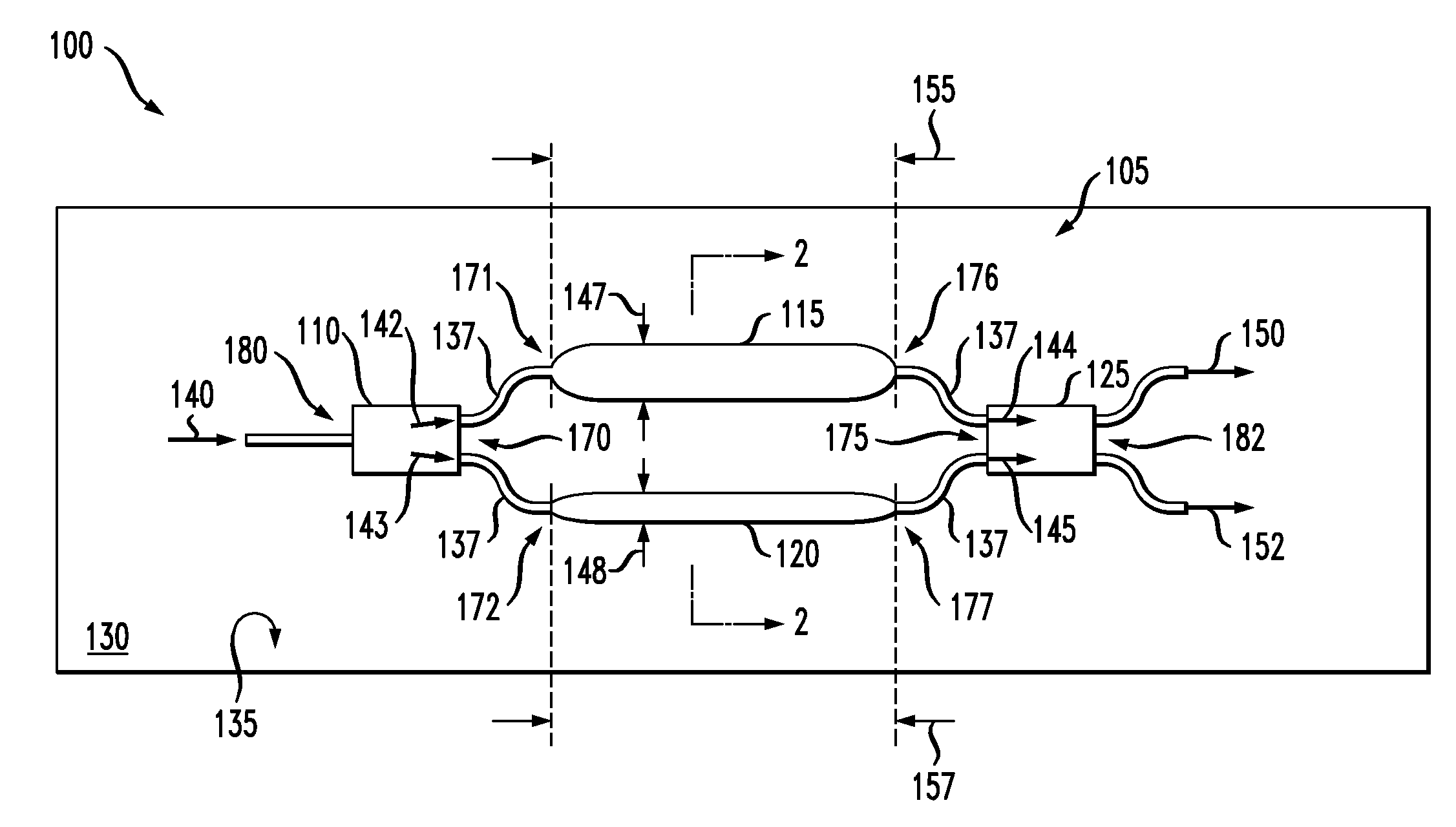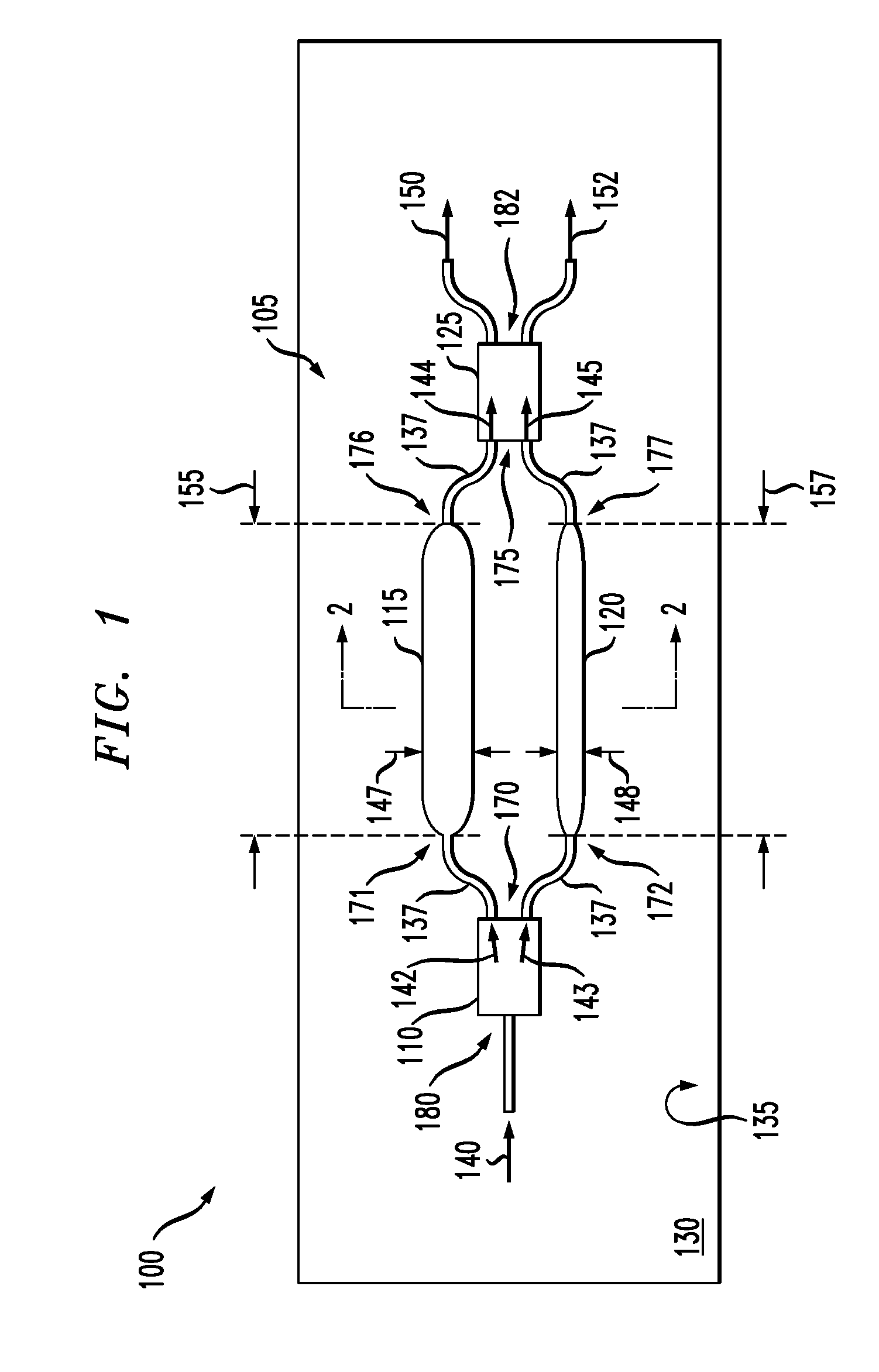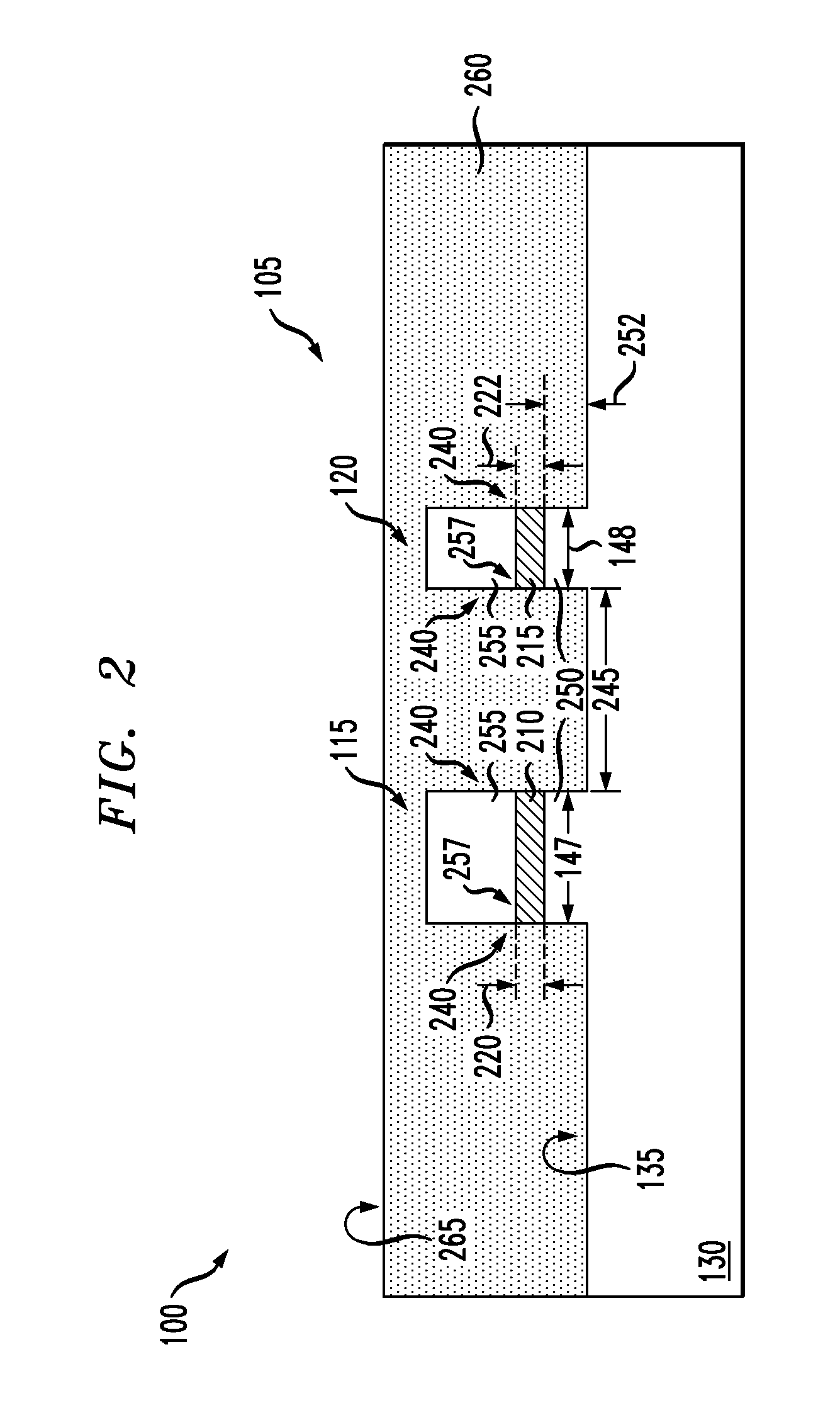Planar polarization splitter
a polarization splitter and planar technology, applied in the field of polarization splitters, can solve the problems of reducing the insertion loss of the design, affecting the insertion efficiency of the design, and unable to provide such wavelength insensitivity in the low-cost and compact design of the apparatus
- Summary
- Abstract
- Description
- Claims
- Application Information
AI Technical Summary
Benefits of technology
Problems solved by technology
Method used
Image
Examples
Embodiment Construction
[0014]It was discovered that changing the width in two ridge waveguides can in itself cause sufficient changes in the effective refractive indexes of TM and TE polarized light so as to provide a desired phase shift over reasonably short propagation distances. A 180-degree phase differences between the accumulated phase difference between TE and TM light between the two waveguides can be implemented for compact polarization splitter designs by placing the two waveguides in an interferometer. For instance, for short planar waveguide lengths (e.g., less than about 500 microns) two waveguide cores having appropriately different widths can provide 180-degree phase shifts in the TE or TM light output between the two waveguides.
[0015]In a polarization splitting application of such a structure, the 180-degree phase-shifted light can be passed through a coupler to provide two outputs: one output that is substantially TE polarized light and another output that is substantially TM polarized li...
PUM
 Login to View More
Login to View More Abstract
Description
Claims
Application Information
 Login to View More
Login to View More - R&D
- Intellectual Property
- Life Sciences
- Materials
- Tech Scout
- Unparalleled Data Quality
- Higher Quality Content
- 60% Fewer Hallucinations
Browse by: Latest US Patents, China's latest patents, Technical Efficacy Thesaurus, Application Domain, Technology Topic, Popular Technical Reports.
© 2025 PatSnap. All rights reserved.Legal|Privacy policy|Modern Slavery Act Transparency Statement|Sitemap|About US| Contact US: help@patsnap.com



